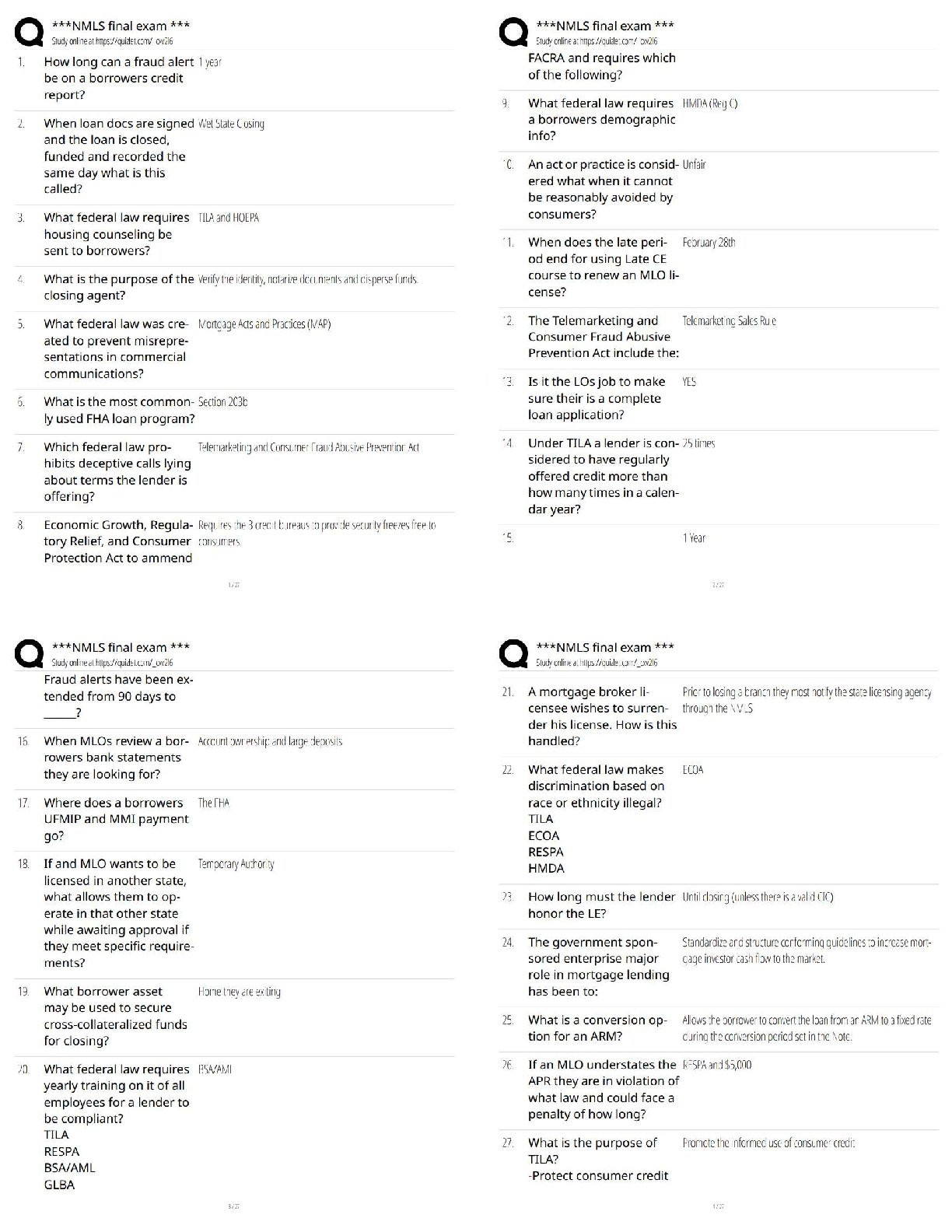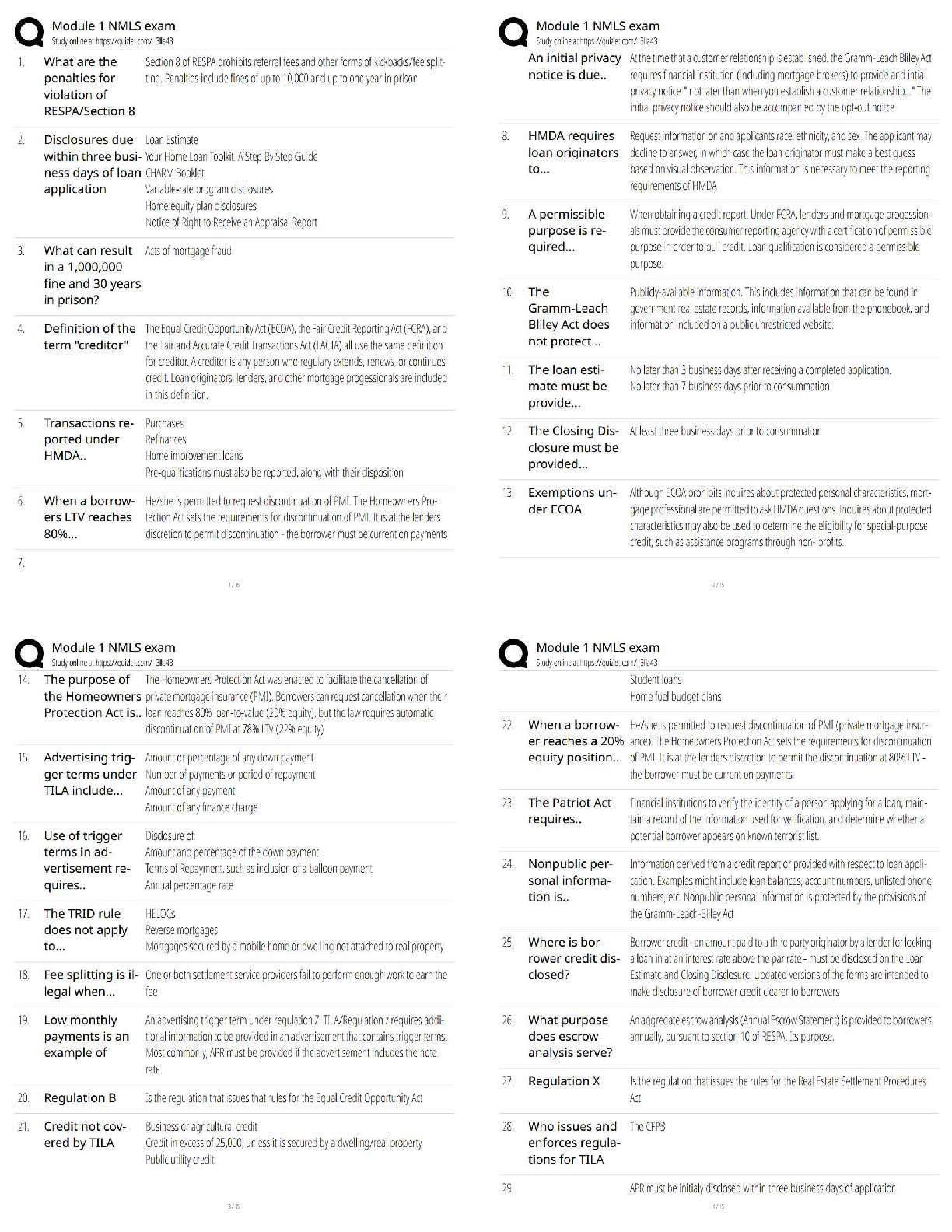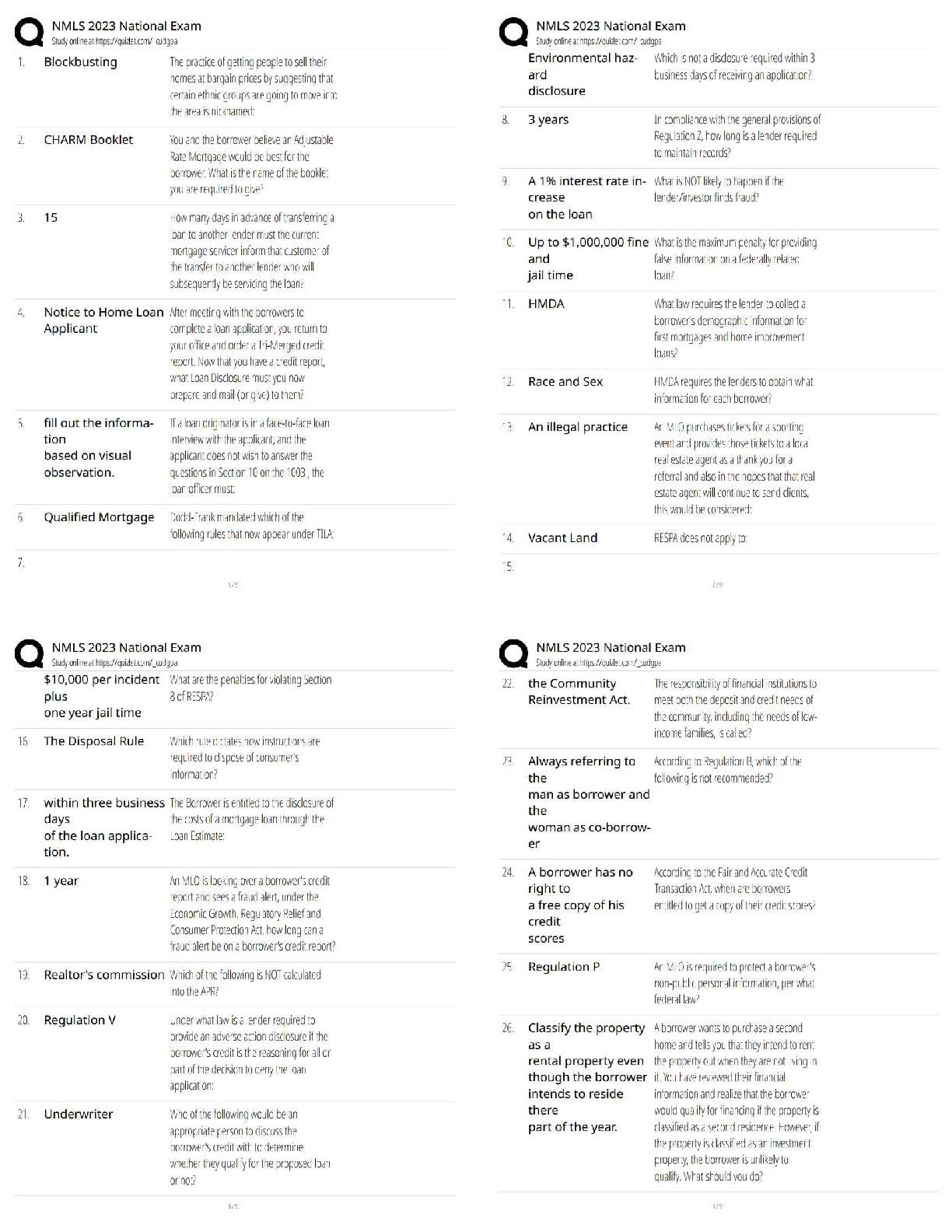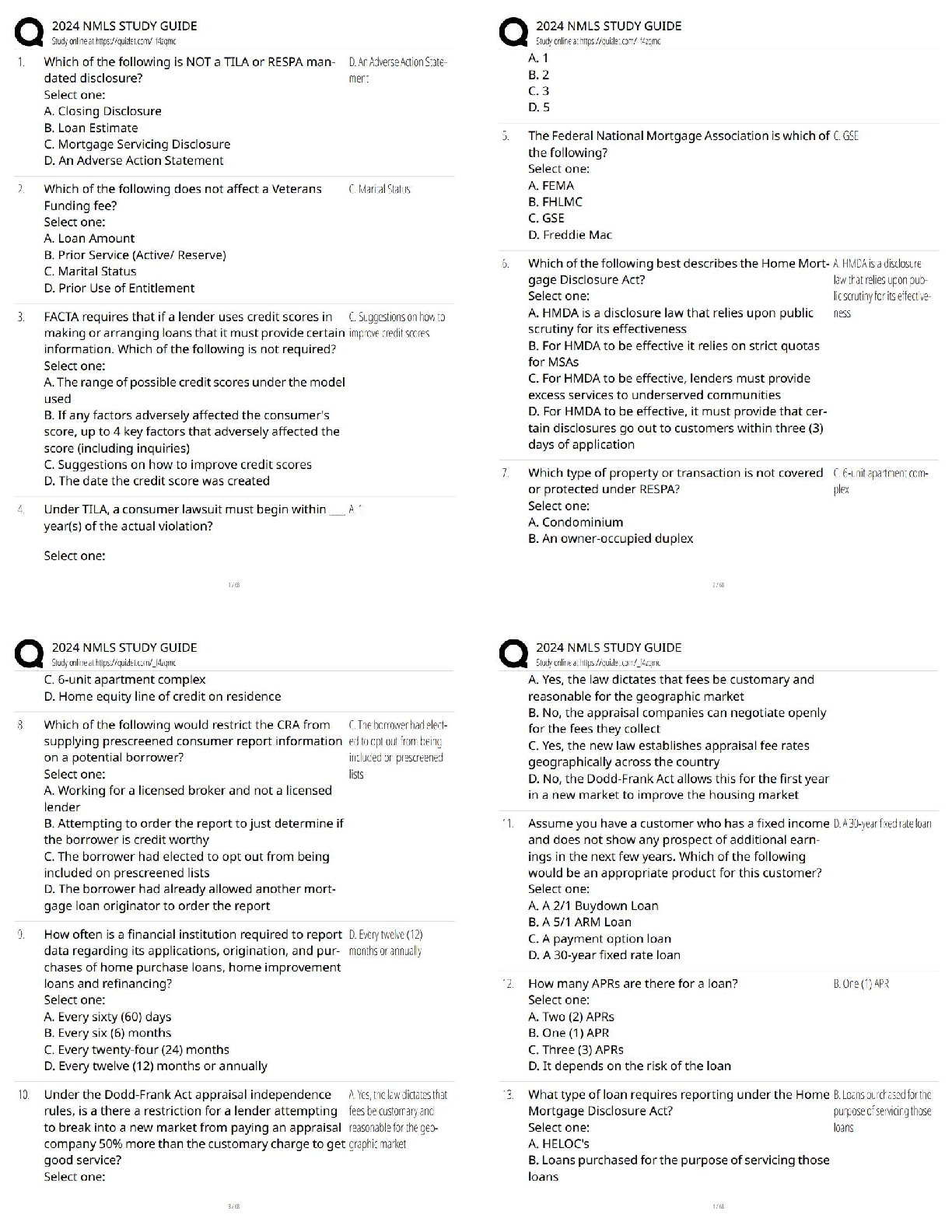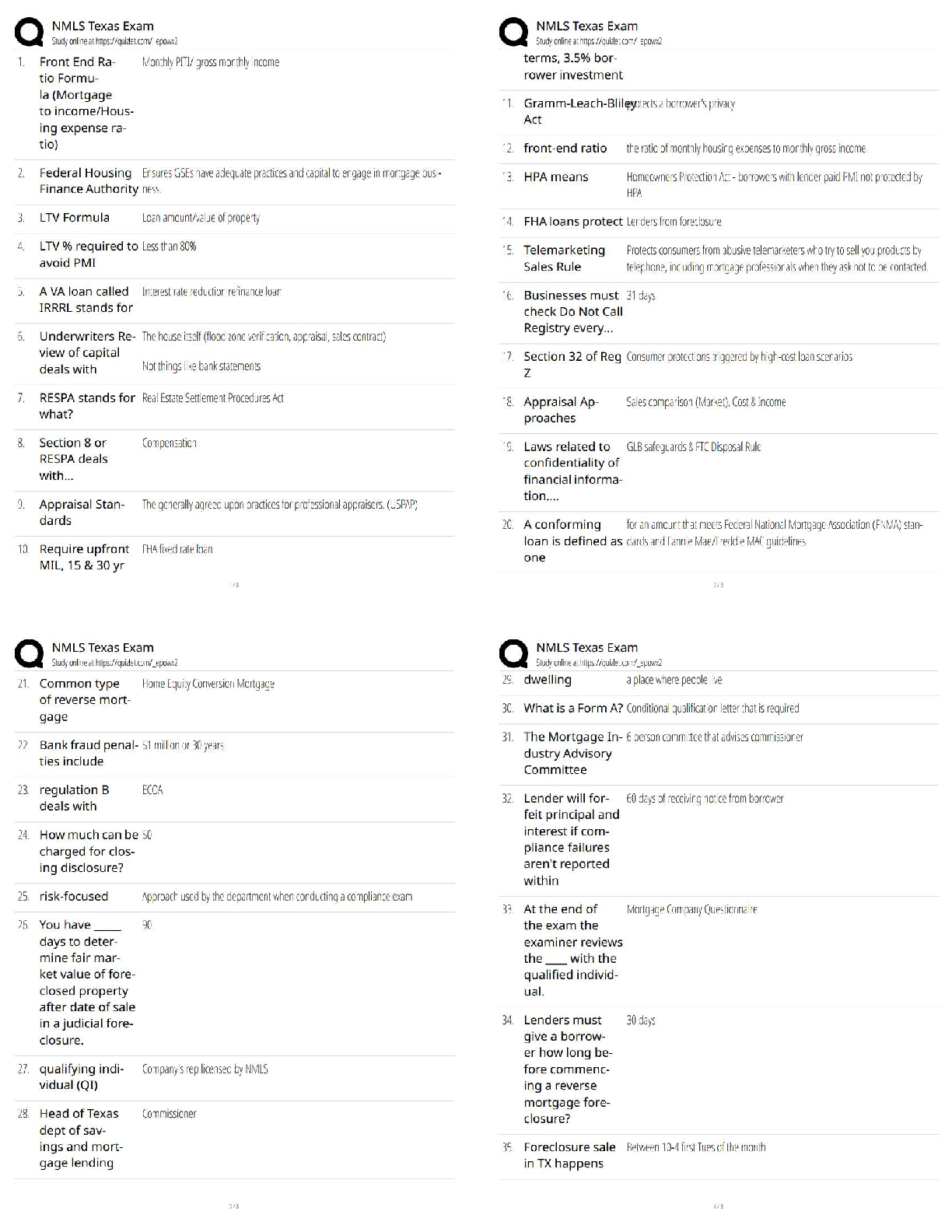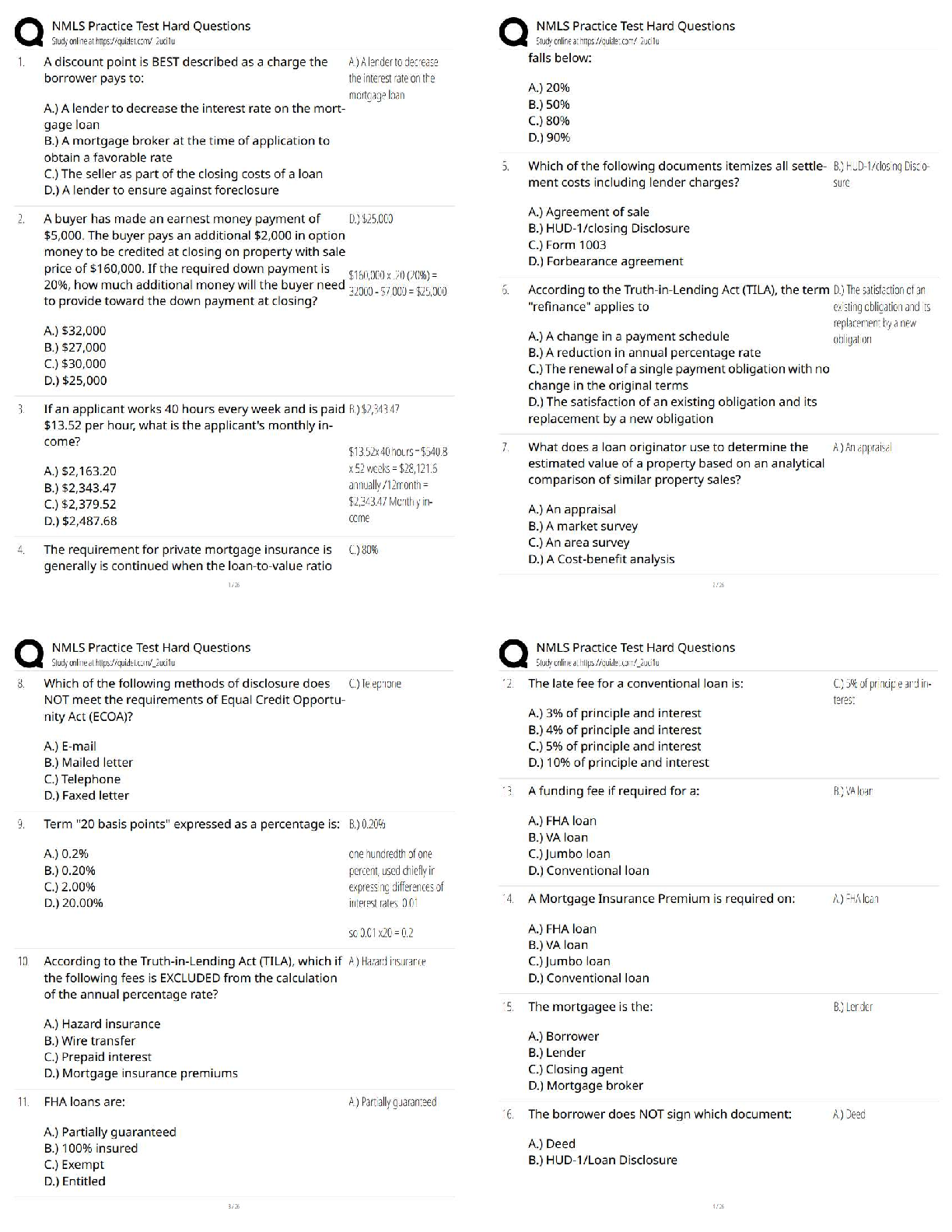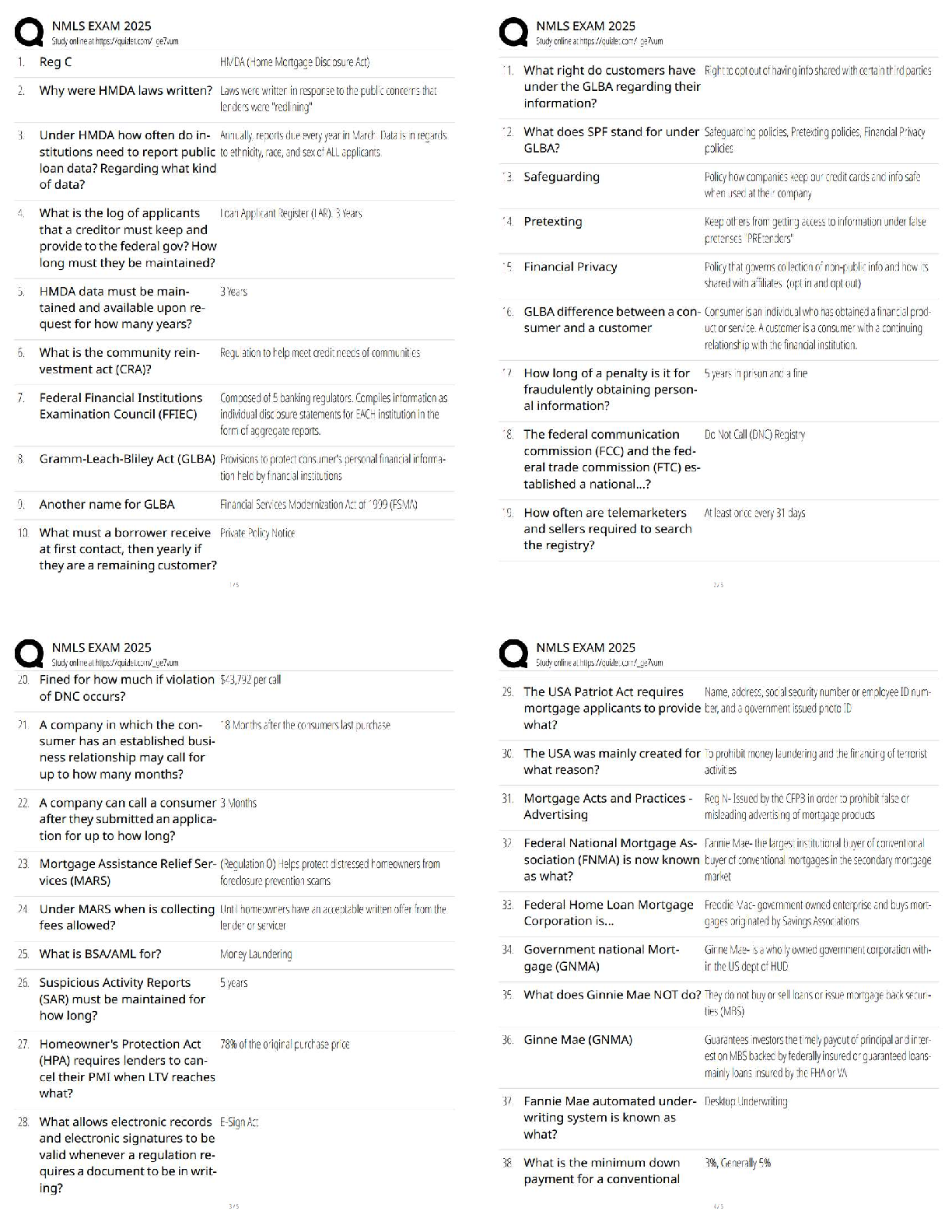ACUTE/CHRONIC PAIN BEST STUDY GUIDE
Document Content and Description Below
What is an example of chronic pain?
A. Pain that follows injury and ends when healing is complete
B. Pain that precedes injury
C. Pain that outlasts the healing process
D. Pain that is felt during
...
injury and immediately after
What is the relationship between a full opioid agonist and the ceiling effect?
a. A client may use a full opioid agonist as much or as little as necessary to control chronic pain with no
ill effects.
b. A full opioid agonist produces few withdrawal symptoms when the drug's effects plateau and the client
begins easing off the drug.
c. Side effects may limit a full opioid agonist's use but not a plateau in the beneficial effects it
produces.
d. At some point, a full opioid agonist's side effects cease to increase in potency, but the pain-relieving
effect continues to increase.
A client who has been undergoing treatment for chronic back pain has been considering variousover-thecounter nonopioids to manage the pain. The nurse has assessed the client's needs and discussed the
use of available methods with the client. Which client statement indicates the need for further instruction?
a. "I may use both opioid and nonopioid medications together, especially to relieve severe pain."
b. "I may use these medications for as long as I think they are necessary."
c. "I should not take a higher than recommended dose because the beneficial effect isn't likely to be
higher with a higher dose."
d. "Nonopioid pain medications can have serious side effects I need to consider and watch for
carefully."
A toddler being prepared for a lumbar puncture begins to cry when carried into the treatment room by the
mother. Which nursing diagnosis is most appropriate for the client at this time?
a. Anxiety related to anticipated painful procedure
b. Ineffective Coping related to an invasive procedure
c. Fear related to the unfamiliar environment
d. Knowledge Deficient of the procedure
The nurse is creating a pain management plan using the three-step approach for a client with intractable
pain. Which interventions should the nurse include in this plan? Select all that apply.
a. Administer a nonopioid analgesic first
b. Administer an opioid analgesic first.
c. Administer an opioid analgesic last.
d. Administer a nonopioid with an opioid second.
e. Administer analgesics upon client request.
Which of the following statements best characterizes risk for injury as it relates to pain?y
a. Precautions against risk for injury are rarely successful in preventing injury.
b. Risk for injury can be decreased by living a healthy lifestyle.
c. It is difficult to predict what might pose a risk for injury.
d. Risk for injury is an external risk factor for pain.
The nurse is reviewing the admission orders for an older adult client who is being admitted for a
hysterectomy. The client, who has been diagnosed as having uterine cancer, has chronic pain caused by
arthritis. The healthcare provider has prescribed long-acting oral narcotic medication to be administered
every 4 hours. What should the nurse do when providing the medication to the client?
a. Consult the provider to order intravenous pain medication.
b. Administer the medication if the client requests it.
c. Administer the medication sparingly to avoid narcotic addiction.
d. Administer the medication every 4 hours around the clock.
A preschool-age client's IV has infiltrated and must be restarted immediately for medication
administration. There is no time for placing local anesthetic cream on the skin to decrease the pain
associated with the procedure. Which complementary therapy would be most helpful when placing the IV
for this pediatric client?
A. Restraint using a "mummy wrap"
B. Distraction using bubbles
C. Anesthesia
D. Moderate sedation
Which of the following triggers pain?
a. The cardiovascular system
b. The musculoskeletal system
c. The peripheral nervous system
d. The central nervous system
Which of the following statements best describes the body's adaptation to pain?
a. Once the body adapts to pain, its detrimental effects cease.
b. The worse pain becomes, the more obvious it is.
c. The observation of pain's effects may become more difficult.
d. The body's sympathetic response increases.
Which of the following statements describes all pain?
a. Pain can be localized to a particular area of the body.
b. Pain's effects are primarily physiological, not mental or emotional.
c. Pain is the result of tissue damage.
d. Pain's effects can be verbalized.
END OF LIFE CARE
The nurse is taking care of a client with terminal lung cancer who is showing signs of imminent death.
What change should the nurse most expect the client to exhibit first?
a. Blurry vision
b. Decreased blood pressure
c. Irregular pulse rate
d. Confusion
A competent older adult client has a living will that expresses the client's desire to avoid resuscitation and
heroic life support measures. The family members are not supportive of this directive and plan to contest
the living will. Which nursing action is the most appropriate?
A. Place the document on the chart.
B. Contact the Social Services department.
C. Notify the hospital attorney.
D. Explain to the client that the conflict could invalidate the document.
The nurse is caring for a client who has suffered a massive cerebral hemorrhage and is not expected to
survive. The client's mother indicates the client is Catholic. Which intervention is most appropriate?
a. The nurse should ask the client or the client's family what they want in terms of religious
rituals.
b. The nurse should assume the client's desires based on the nurse's existing understanding of the
Catholic faith.
c. The nurse should contact a priest and ask him what must be done for the client.
d. If the nurse is not Catholic, then finding a Catholic nurse to continue care for the client is necessary.
The nurse is caring for the family of a terminally ill client. The family members have been tearful and sad
since the diagnosis was given. What is the best nursing diagnosis for this family?
a. Hopelessness
b. Grieving
c. Caregiver Role Strain
d. Compromised Family Coping
An older adult client with terminal lung cancer is not breathing well and has cold and mottled skin. The
client has a living will and requests comfort measures only. What should the nurse do to help this client?
a. Contact the provider for orders to control the client's breathing.
b. Provide the client with pain medication as ordered.
c. Ask the family what they want to be done for the client.
d. Withhold all care until the client dies.
The nurse is caring for a dying child. Which nursing action supports the primary goal for a dying child?
a. Keep the child entertained so she does not think about dying.
b. Administer pain medication as ordered.
c. Ensure that a good relationship is maintained with the family.
d. Maintain a busy schedule for child and family members.
The parents of a child with terminal cancer ask the nurse that the child not be told that he will not recover.
The nurse anticipates that the child might ask the nurse if he is dying. What would be most appropriate for
the nurse to do?
a. Tell the child he is dying if the child asks and offer to stay with him.
b. Suggest a meeting with the healthcare team and the parents.
c. If the child asks about death, offer to bring in the child life therapist to help explain the situation.
d. Prepare to ignore the child's question if the child asks it and change the subject.
An older school-age child is brought to the emergency department after a car accident. The parents
witness and stare at the resuscitation scene unfolding before them. The child is not responding to the
resuscitative efforts after 30 minutes. Which is the best communication strategy for the nurse to use in
this situation?
A. Ask the parents to leave until the child has stabilized.
B. Ask the parents whether they would like resuscitative efforts to be continued at this point.
C. Inform the parents that resuscitative efforts have not been effective and are not beneficial to
the child.
D. Ask the parents to stand at the foot of the cart to watch.
The wife of a patient with end-stage chronic obstructive pulmonary disease (COPD) tells the nurse that
she wishes her husband were eligible for hospice care but she thinks that hospice is only available for
cancer patients. She is also concerned that, even if he were eligible for hospice care, they couldn't afford
it, they'd have medical personnel constantly underfoot, and her husband would have to switch healthcare
providers. Which responses by the nurse are appropriate? Select all that apply.
a. Tell her that hospice care is intended to ease the burden of primary caregivers, not add to it by
being in the way.
b. Inform her that a diagnosis of cancer is not required for hospice care.
c. Tell her that, even though her husband has end-stage COPD, he is not eligible for hospice care.
d. Inform her that all hospice programs are provided 24/7 in long-term care facilities.
e. Inform her that hospice care is very expensive.
An adolescent client with terminal cancer tells the nurse that she does not want any more treatment, even
though her parents are planning for her to participate in a study trial that involves aggressive
chemotherapy. Which action by the nurse is the most appropriate?
a. Tell the client that the decision is her parents' and she has to participate in the study.
b. Tell her not to worry because her parents want the best for her.
c. Tell her that, at 16, she can make her own decisions no matter what her parents want.
d. Request that the parents and daughter meet together with the healthcare team to discuss
options and the implications of various choices.
If nutrients and hydration are provided artificially for a client at the end of life because of the client's
diminished muscle control, then what is another therapy that is likely to accompany this therapy?
a. Provide oral care regularly.
b. Provide mechanical ventilation.
c. Gently massage extremities.
d. Maintain client safety.
What best explains the reason that a nurse should be responsible for communicating any changes in the
condition of a client at the end of life that would warrant a change in the care plan?
a. Nurses are the healthcare providers who tend to have the greatest amount of contact with
clients at the end of life.
b. Clients typically do not prefer to talk to physicians about problems.
c. Nurses typically are responsible for definitively diagnosing patient conditions.
d. It is legally mandated that nurses are solely responsible for communicating this information.
What word best describes the pain a client experiences at the end of life?
a. Acute
b. Unmanageable
c. Inevitable
d. Unpredictable
FIBROMYALGIA
The nurse is caring for a client who is diagnosed with fibromyalgia. Based on this diagnosis, which clinical
manifestations might the nurse anticipate for this client? Select all that apply.
a. Exhaustion
b. Nausea and vomiting
c. Weakness
d. Anxiety
e. Pain in the calves of the leg
The son of a client with fibromyalgia asks the nurse if he will also experience the health problem. Which
responses by the nurse are appropriate for this situation? Select all that apply.
a. Having a family member with fibromyalgia increases the risk for developing it.
b. Fibromyalgia is more prominent in women.
c. If your diet is high in fatty foods, you have a greater chance of developing fibromyalgia.
d. If you exercise often enough you'll be fine.
e. Only people aged 20-50 develop fibromyalgia.
A man brings his wife to the clinic and states, "I want you to fix my wife and tell her that there is nothing
wrong with her." The client has symptoms of pain, sleep disorders, and stiffness. Which would be most
appropriate for the nurse to include in a plan of care for this family?
a. Medications used to treat fibromyalgia
b. Suggested dietary changes to help with the pain
c. Information and literature on fibromyalgia
d. An exercise program to increase energy
The nurse identifies the nursing diagnosis of Chronic Pain as being appropriate for a client with
fibromyalgia. Which manifestation did the client most likely report that caused the nurse to select this
diagnosis?
a. Tender points in the knees
b. Pain from a severe skin rash
c. Pain from eyestrain
d. Acute chest pain
During a home visit, the family of a client with fibromyalgia asks the nurse what they can do to help the
client with painful episodes. What should the nurse suggest to the client and family?
a. Plan a family reunion or vacation.
b. Protect the client from injury.
c. Keep the client in bed.
d. Divide household chores among each member of the family.
The nurse is discussing goals to relieve pain and fatigue with a client newly diagnosed with fibromyalgia.
Which goal statement would be realistic for this client to achieve within 30 days?
F
a. Walk her son to school daily.
b. Get a job outside the home.
c. Cook dinner five nights a week.
d. Join an exercise group to meet five nights a week.
The nurse is caring for a client who has recently been diagnosed with fibromyalgia. The client has
complained ofpain, fatigue, and sleep disruptions. Which medication should the nurse anticipate will most
likely be prescribed as part of the client's treatment plan?
a. Pregabalin
b. Milnacipran
c. Duloxetine
d. Acetaminophen
The mother of three teenagers is diagnosed with fibromyalgia and asks the nurse to how to keep up with
all of the children's activities. Which suggestion by the nurse is the most appropriate?
a. Negotiate with the children to alternate attendance of their functions.
b. Attempt to attend all the functions of the children.
c. Avoid attending any afterschool functions for the children.
d. Ask the children to limit their activities.
An adult client is diagnosed with fibromyalgia. The client asks the nurse whether a recent of infection with
the Coxsackie B virus could have caused fibromyalgia. Which response by the nurse is the most
appropriate?
a. The Coxsackie B virus may have triggered the fibromyalgia.
b. The Coxsackie B virus definitely caused the fibromyalgia.
c. The Coxsackie B virus has nothing to do with fibromyalgia.
d. The Coxsackie B virus probably caused the fibromyalgia.
The nurse is counseling an adult client with fibromyalgia. What are some elements of counseling that can
help this client develop effective coping skills? Select all that apply.
a. Inform the client about what to do as the disease worsens.
b. Ask the client about sources of support that the client may be able to rely on.
c. Ask the client about specific stressors in the client's life and how the client handles them.
d. Suggest to the client that some symptoms may be psychosomatic.
e. Advise the client that a dimension of self-efficacy is independently developing a response to the
problems of fibromyalgia.
A 13-year-old female client is diagnosed with juvenile primary fibromyalgia syndrome. What should the
nurse expect regarding this client?
A. The client's WPI score will be no greater than 7.
B. The nurse will treat the client in much the same way as an adult with fibromyalgia.
C. The client's pain will likely have lasted no more than 3 months.
D. Chronic fatigue can be ruled out as a likely clinical manifestation.
A 15-year-old female client diagnosed with juvenile primary fibromyalgia syndrome asks the nurse
whether the fibromyalgia can be cured so that she won't have to deal with it as an adult. Which of the
following is the best response the nurse could make to this question?
a. The client will suffer from persistent fibromyalgia for the remainder of her life unless a cure can be
found.
b. It is likely that the fibromyalgia will persist into adulthood, and there is no cure, but the
symptoms can be treated and the condition is not life-threatening.
c. The fibromyalgia likely can be cured with proper sleep hygiene, exercise, and pharmacologic
management.
d. Fibromyalgia can be difficult to treat effectively, but the symptoms are unlikely to persist into
adulthood.
Fibromyalgia is a disorder that involves which of the following?
A. Muscle strength
B. Respiratory control
C. Heat regulation
D. Pain processing
Which statement best exemplifies the etiology of fibromyalgia?
a. Precipitating factors for fibromyalgia are primarily physiological.
b. No exact cause is known, but some clients with fibromyalgia may have precipitating factors.
c. Stress and poor sleep hygiene are the main precipitating factors for fibromyalgia.
d. The primary cause for fibromyalgia in nearly all clients who have it is infection.
Which is a characteristic of fibromyalgia?
a. Definite as to cause
b. Easy to prevent
c. Difficult to treat
d. Brief in its effects
HIV/AIDS
Once inside the body, human immunodeficiency virus (HIV) infects and destroys several types of cells,
including helper T cells. Select each of the events in this process in the order in which they occur.
1. Virus recognizes and invades helper T cell
3. Viral RNA is acted upon by reverse transcriptase
4. Viral DNA integrates with helper T cell DNA
5. Virus disrupts cell membrane of helper T cell, leading to its destruction
2. Virus sheds its protein coat
The nurse is caring for a client with acquired immunodeficiency syndrome (AIDS) who is on antiretroviral
therapy. The client complains of nausea, fever, severe diarrhea, and anorexia. Which of the following
prescribed medications does the nurse anticipate in order to relieve the anorexia and stimulate the client's
appetite? Select all that apply.
a. Abacavir (Ziagen)
b. Dronabinol (Marinol)
c. Ciprofloxacin (Cipro)
d. Zidovudine (Retrovir, AZT)
e. Megestrol (Megace)
Which of the following statements is false and should not be included in client teaching about how to
reduce the risk of contracting HIV?
a. The only totally safe sex practices are abstinence; long-term, mutually monogamous sexual relations
between uninfected individuals; and mutual masturbation without direct contact.
b. Clients who will require blood transfusions during surgery should encourage their family
members to donate the blood they will receive.
c. When possible, autologous transfusion is a good risk reduction strategy for clients who are
undergoing surgery.
d. Clients should use condoms during every sexual encounter involving vaginal, oral, or anal
intercourse.
What is the most commonly observed opportunistic infection in clients with AIDS?
a. Tuberculosis
b. Mycobacterium avium complex
c. Candida albicans infection
d. Pneumocystis jiroveci pneumonia
A nurse is developing a plan of care for a client who was recently diagnosed with human
immunodeficiency virus(HIV). The client states, "I don't plan on giving up sex just because I am HIV
positive." Based on this data, which nursing diagnosis is the priority for this client?
a. Risk for Infection
b. Deficient Knowledge
c. Social Isolation
d. Death Anxiety
The nurse is caring for a client who is newly diagnosed with human immunodeficiency virus (HIV)
infection. The client asks the nurse whether there are ways to protect the client's life partner from getting
the virus. After the nurse provides the client with teaching related to this topic, which statement on the part
of the client would indicate a need for further education?
a. "I will not share my razor with my partner."
b. "I know I have to practice safer sex with my partner by using a latex condom."
c. "I can still kiss and hug my partner to show affection."
d. "I know to use an oil-based lubricant to prevent spread of the virus to my partner."
The nurse is planning care for a pediatric client who is infected with the human immunodeficiency virus
(HIV). The nurse selects Risk for Infection as a priority nursing diagnosis for this client. Based on this
nursingdiagnosis, which actions by the nurse are appropriate? Select all that apply.
a. Teaching proper food-handling techniques to the family
b. Administering tuberculosis skin tests every 6 months
c. Monitoring hand-washing techniques used by the family
d. Instructing on the importance of delaying vaccinations until adulthood
e. Assessing the health status of all visitors
The nurse is reviewing the laboratory results of a client who is newly diagnosed with acquired
immunodeficiency syndrome (AIDS). Which result would be considered p
[Show More]
Last updated: 3 years ago
Preview 1 out of 22 pages

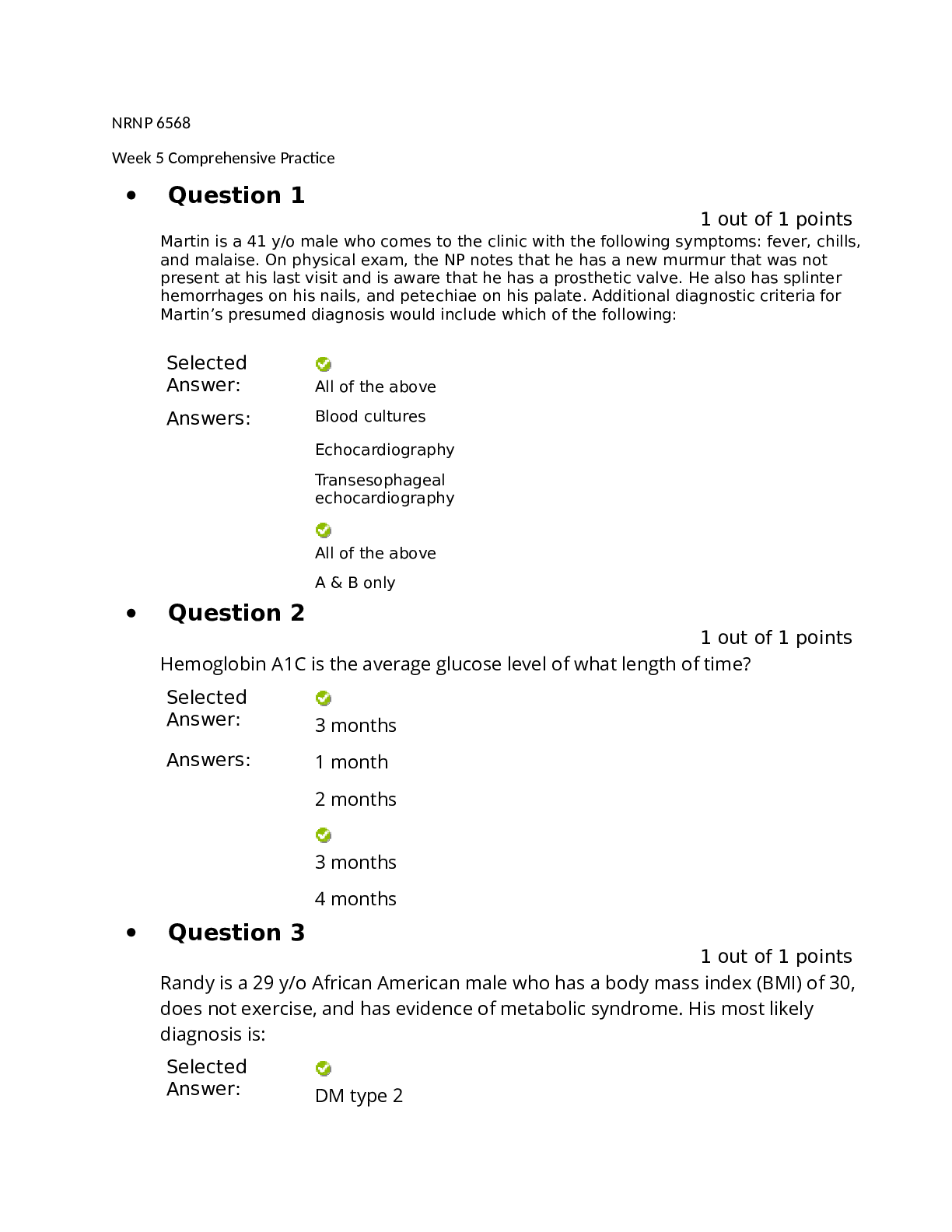
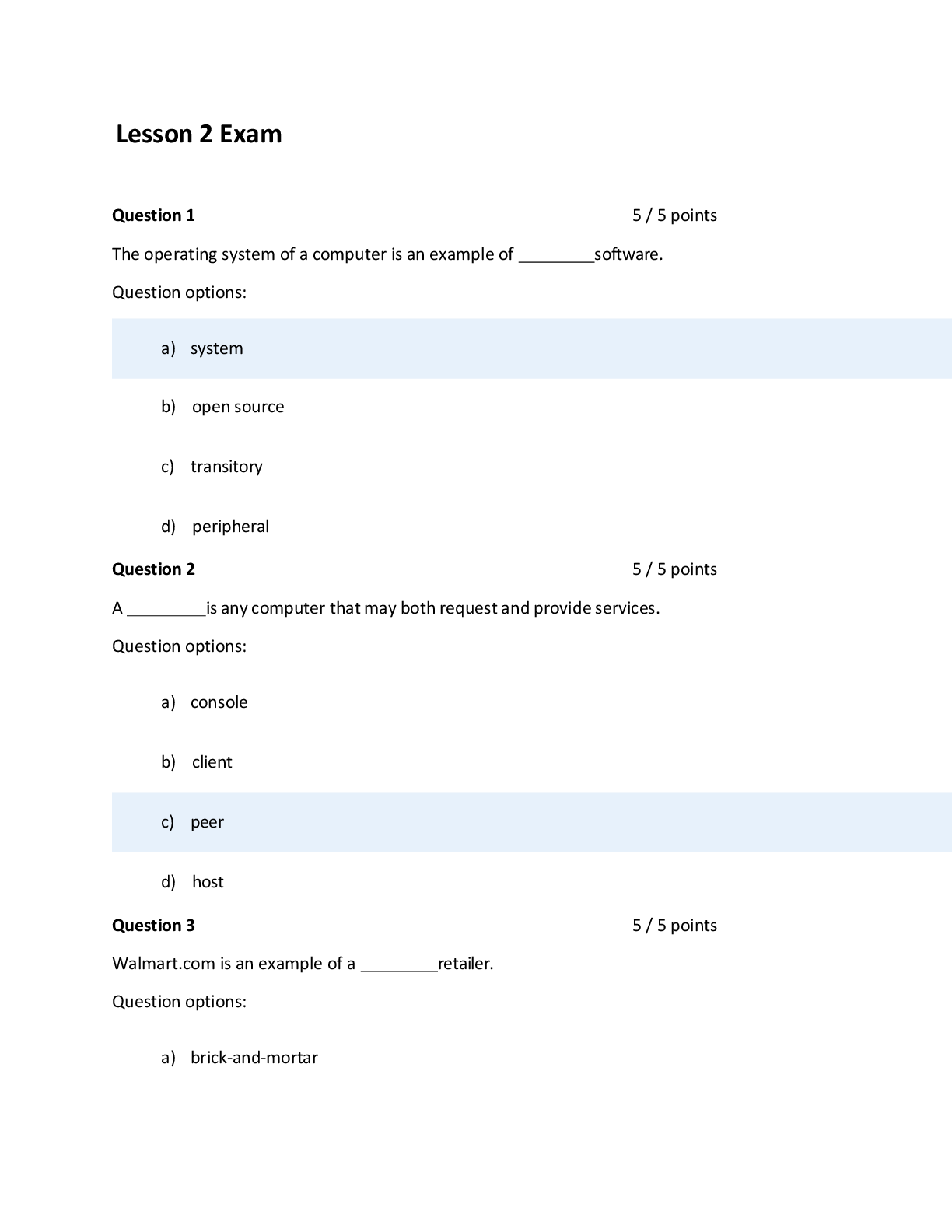

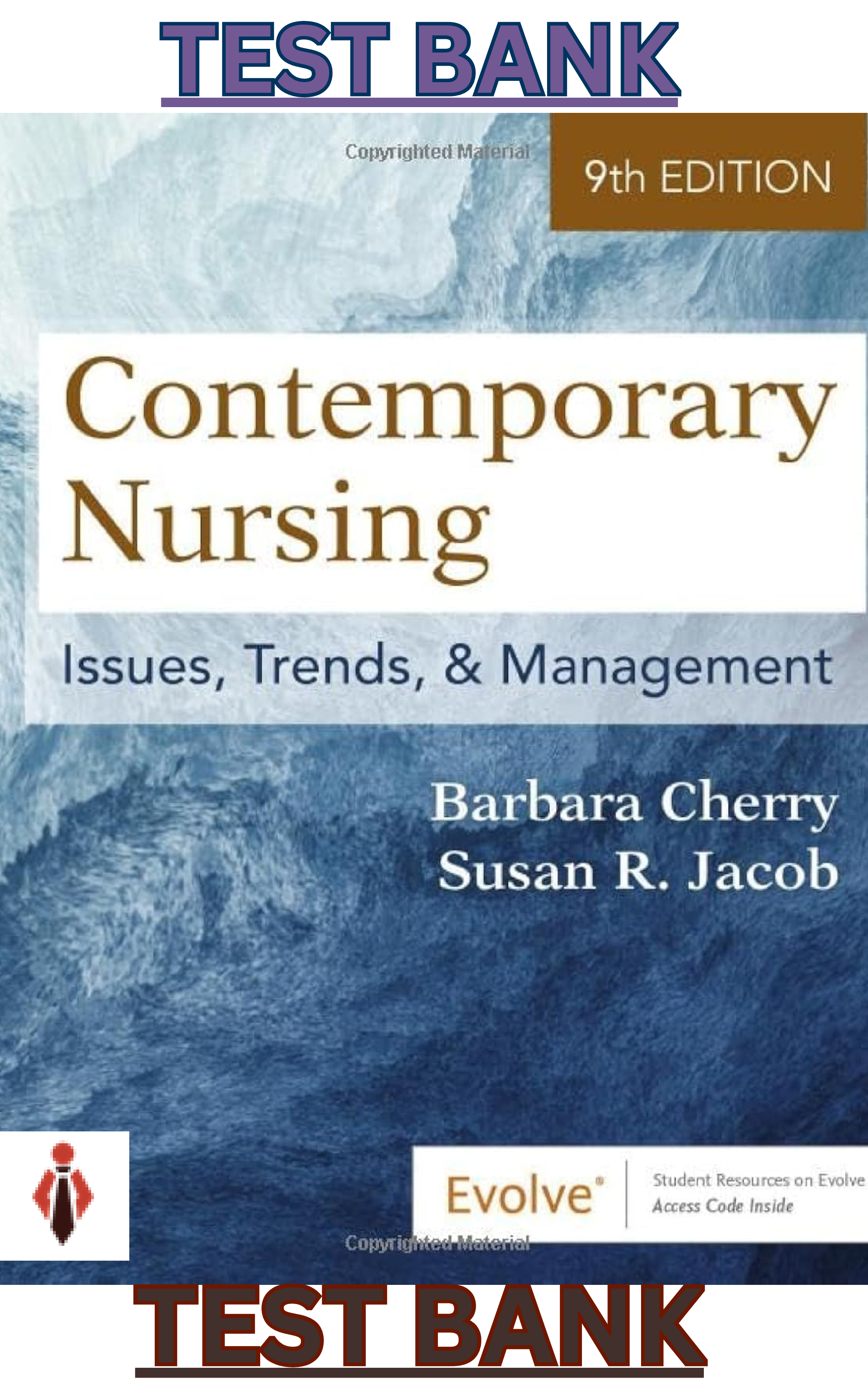
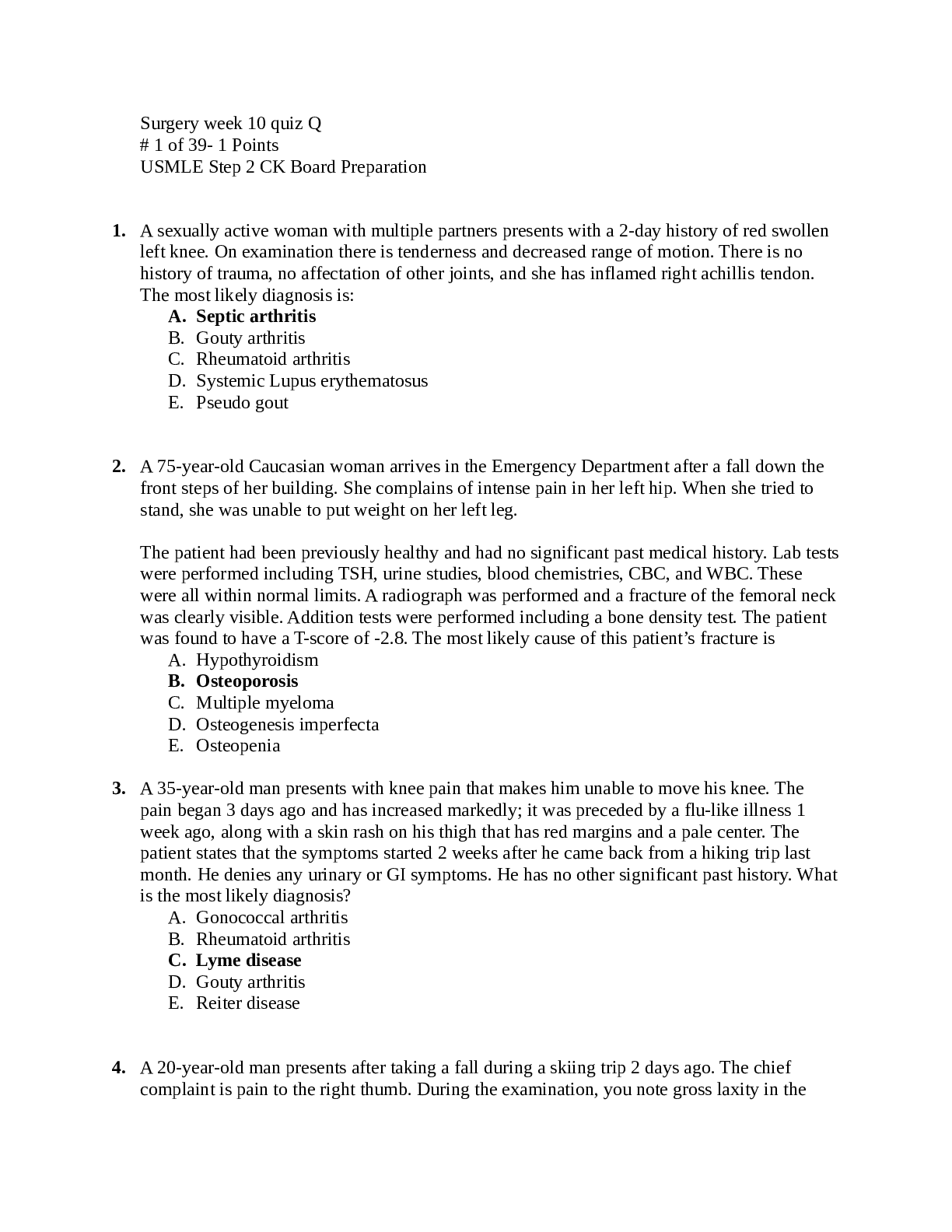
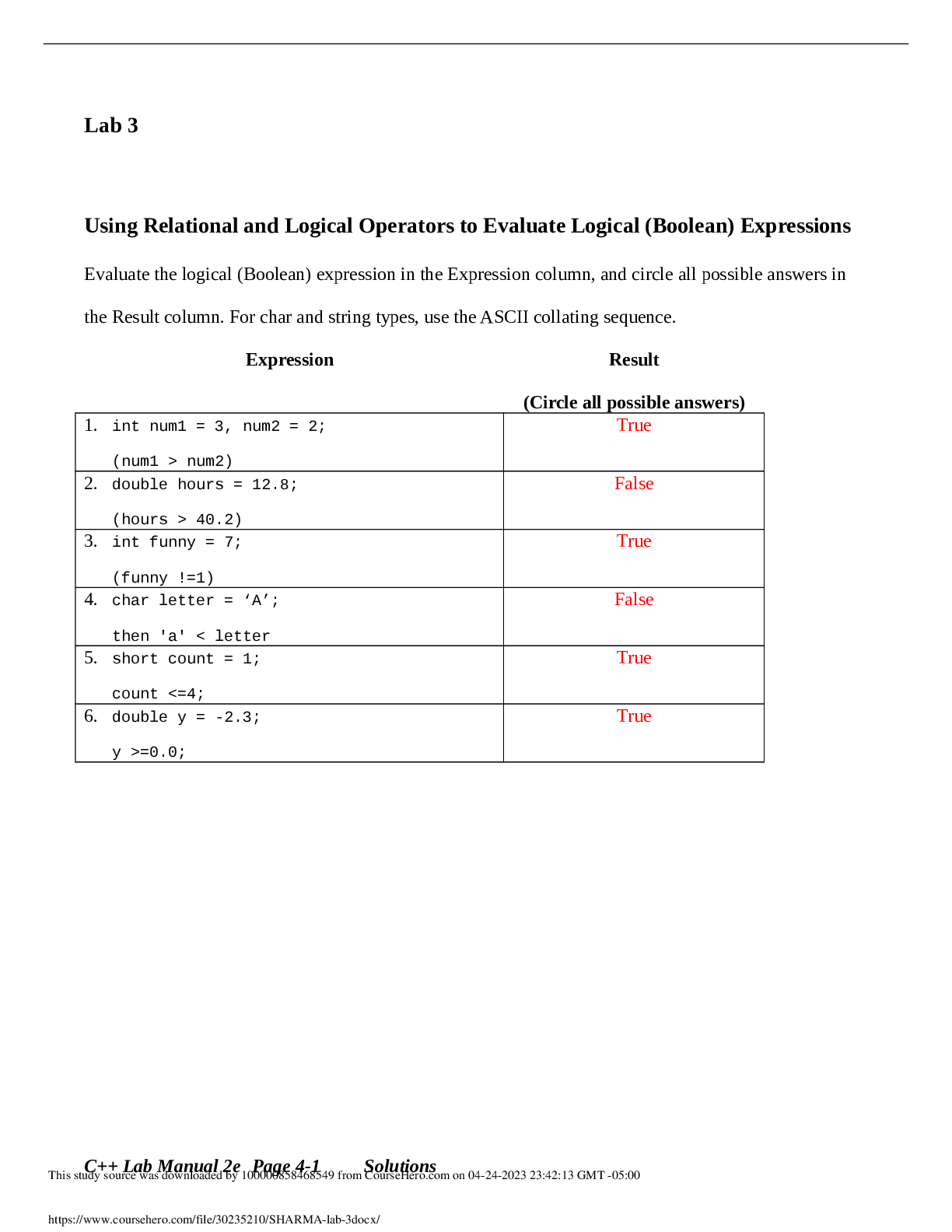
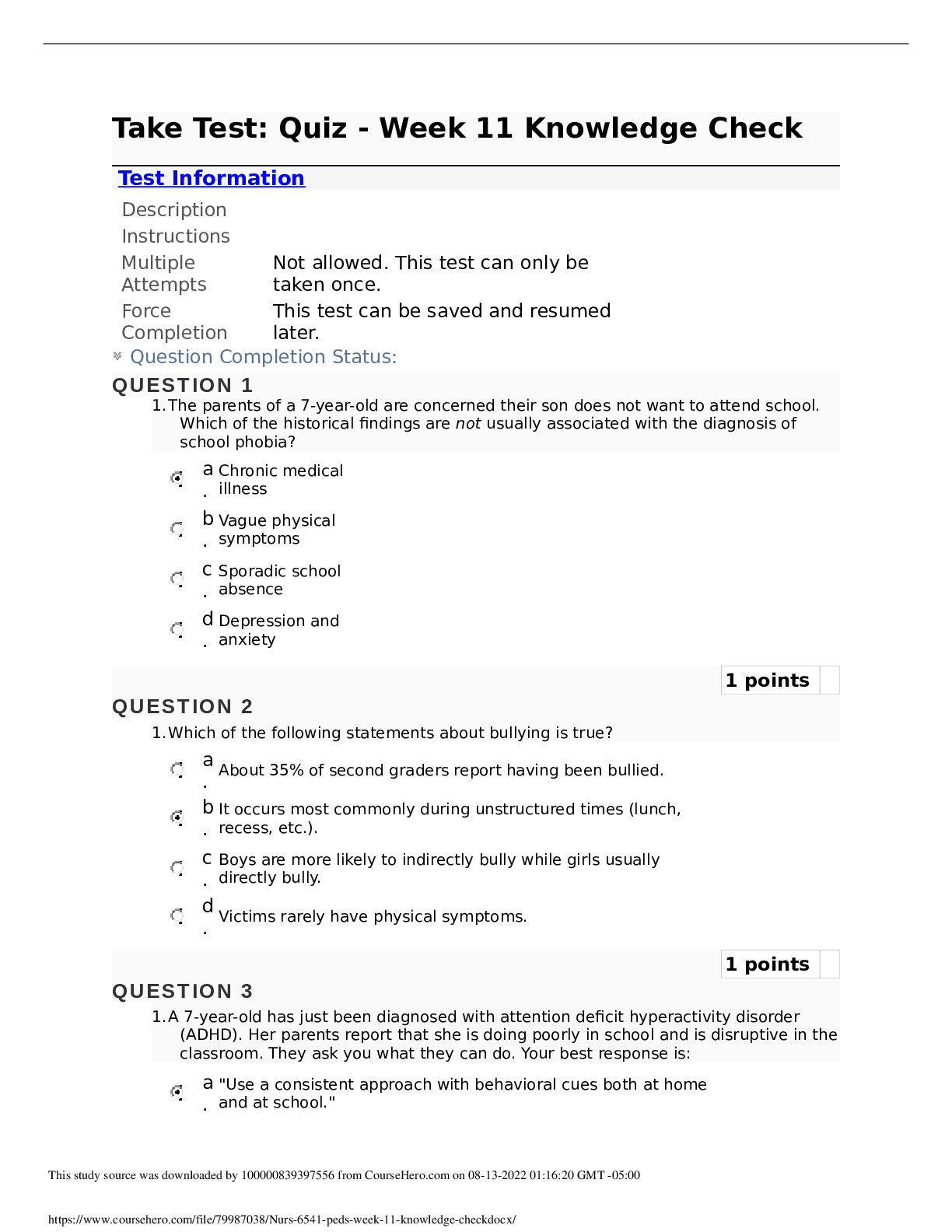
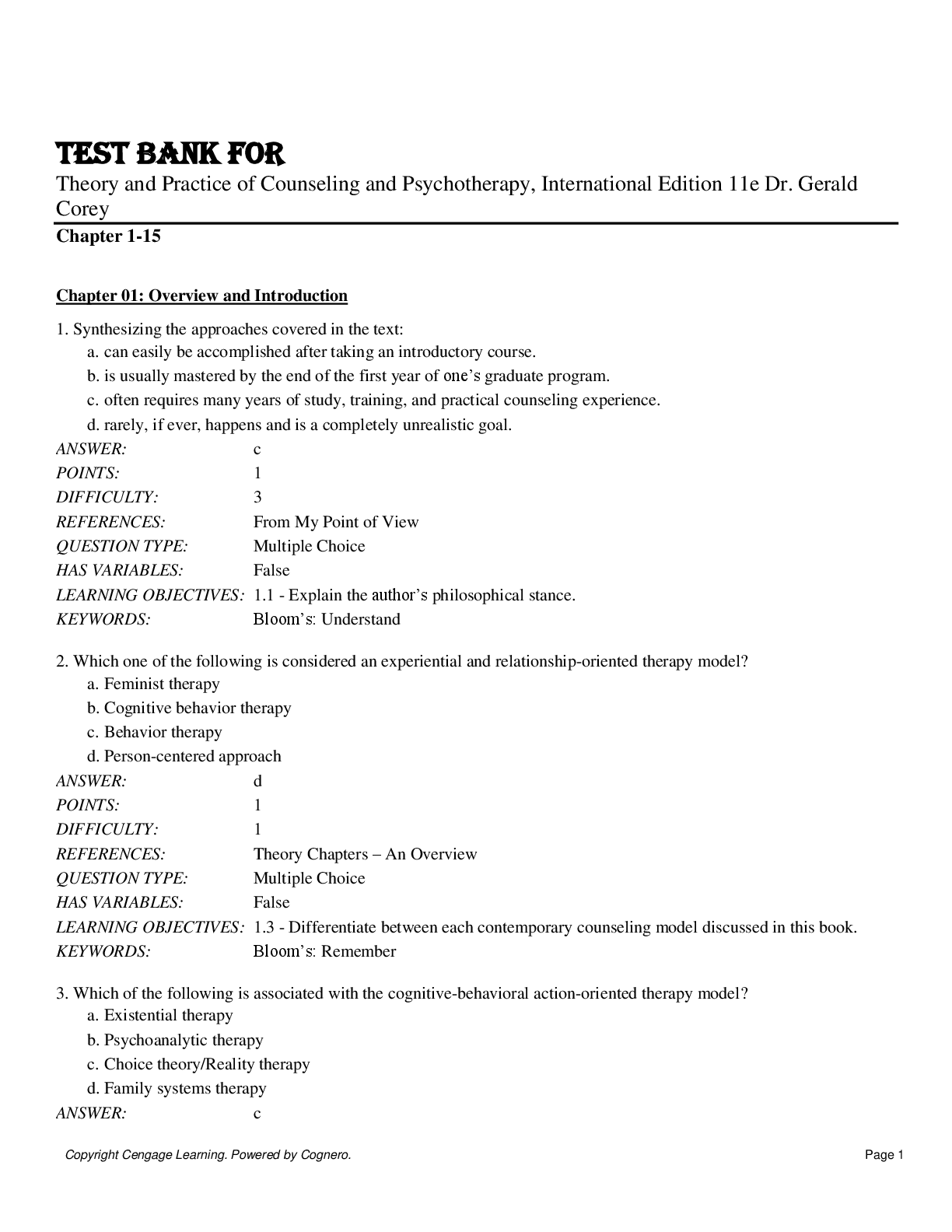
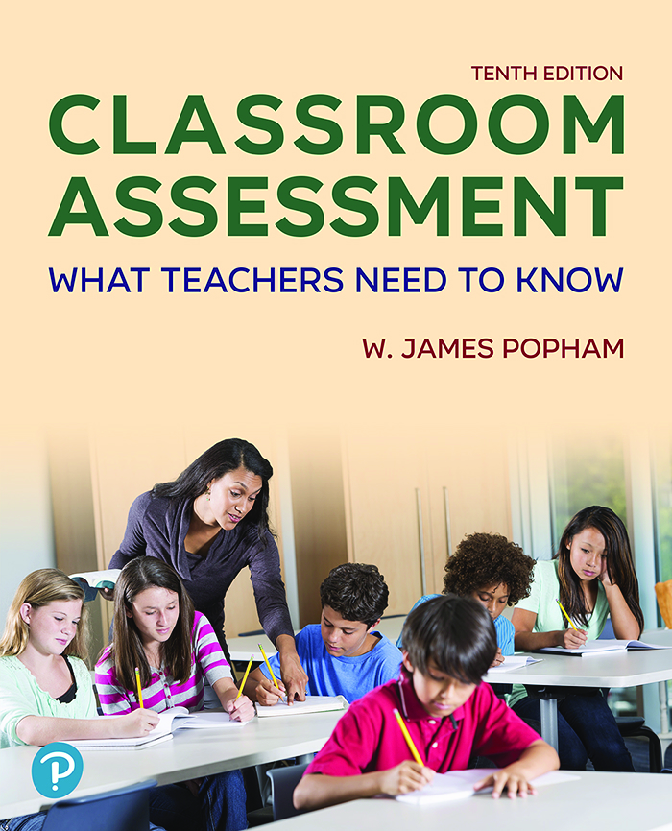



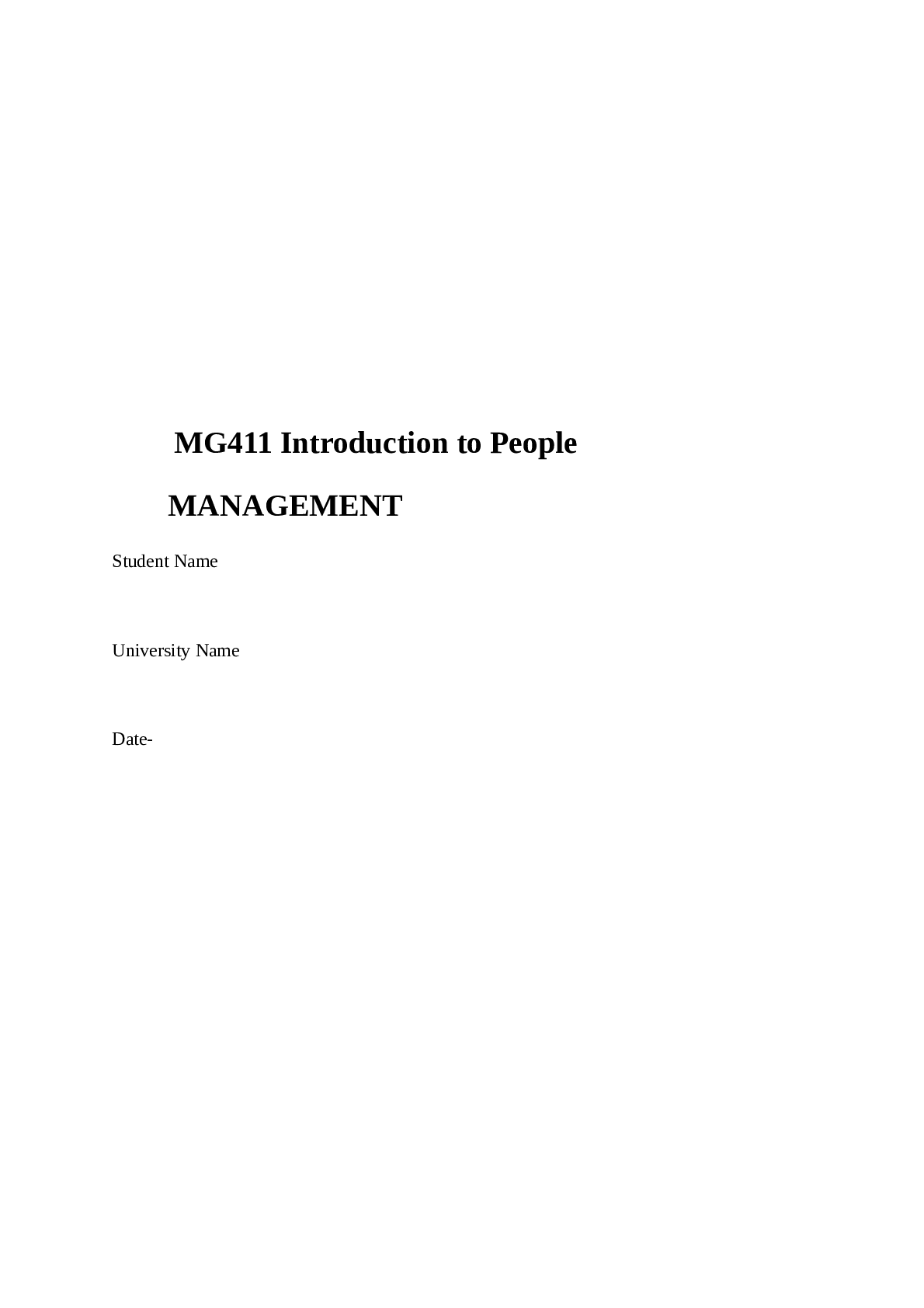

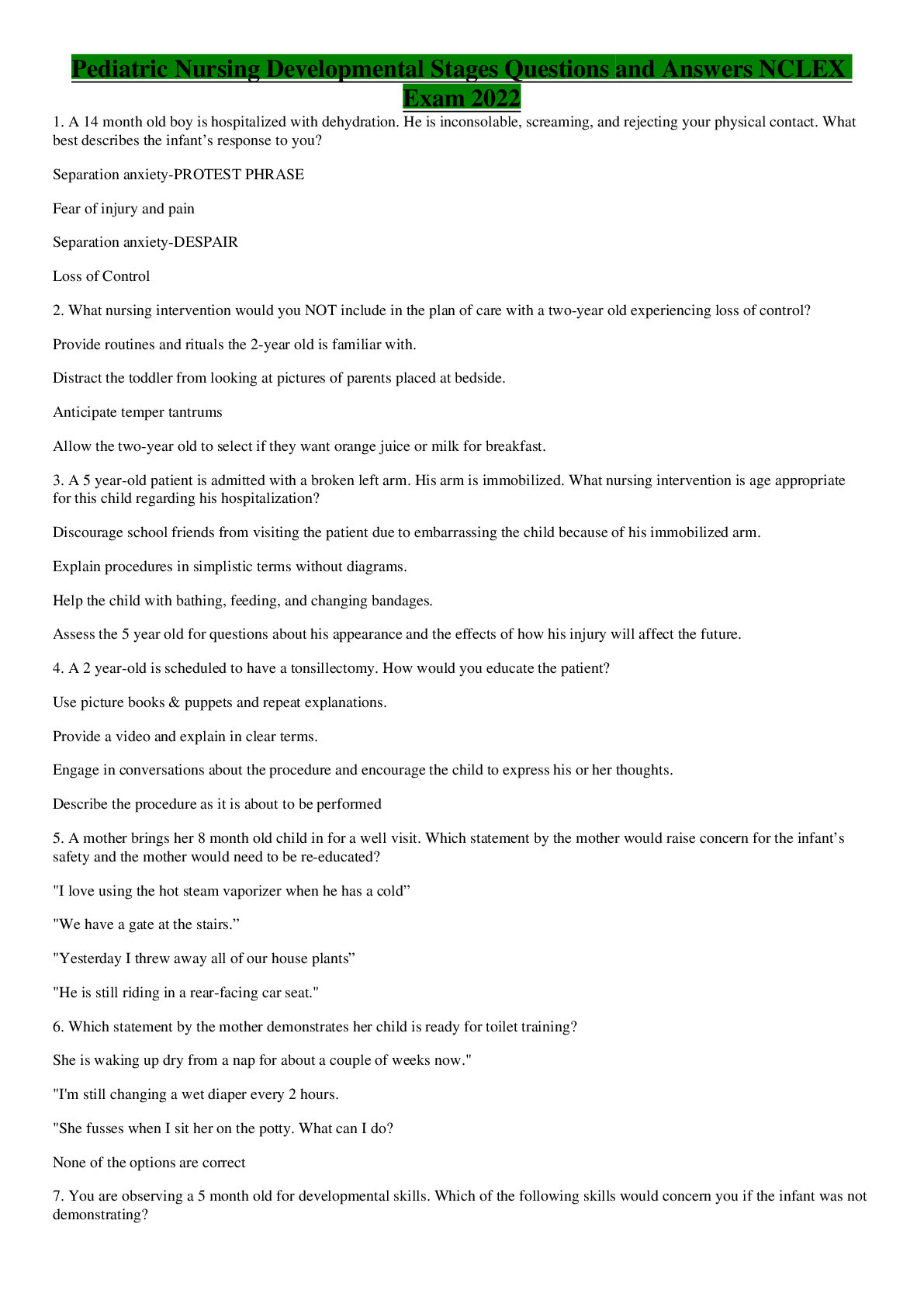



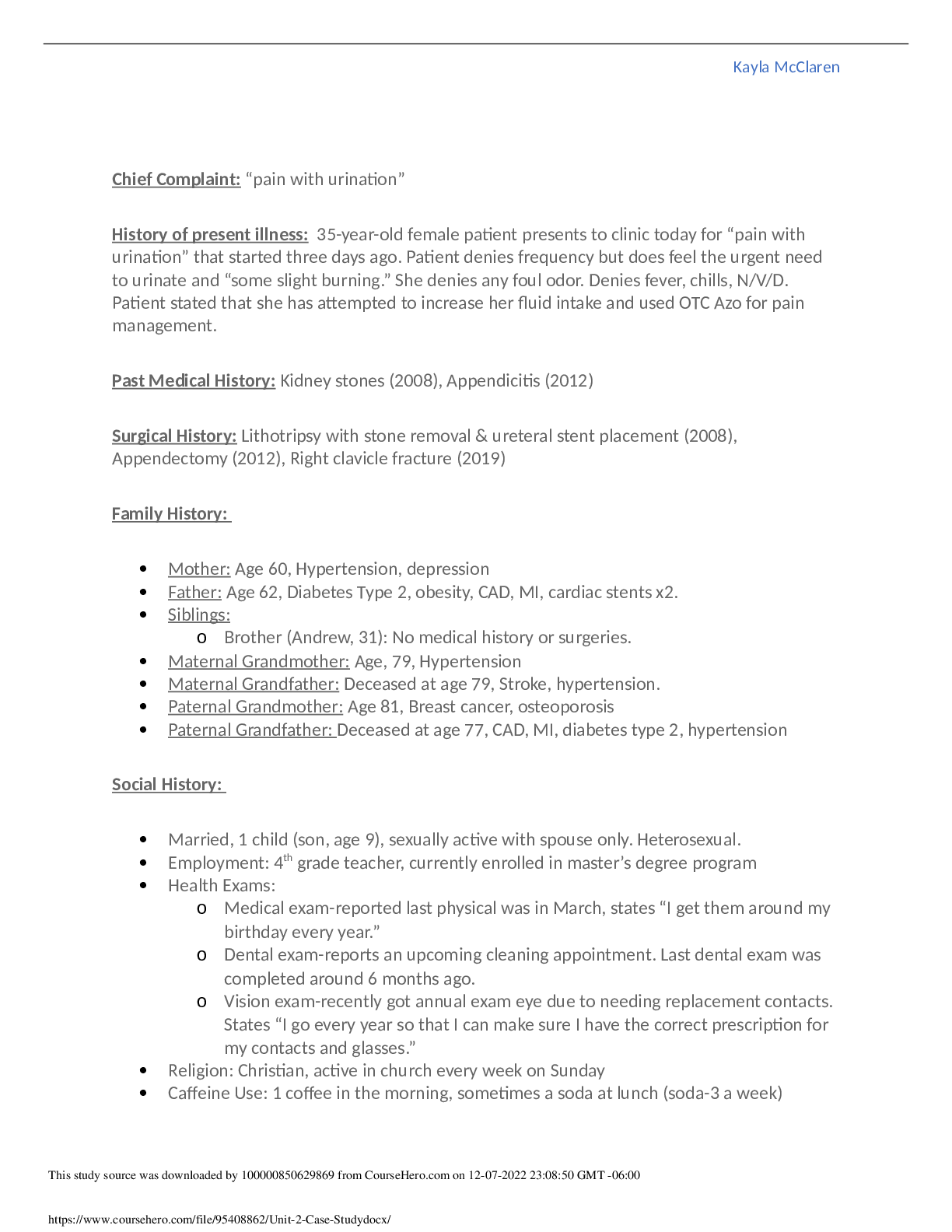
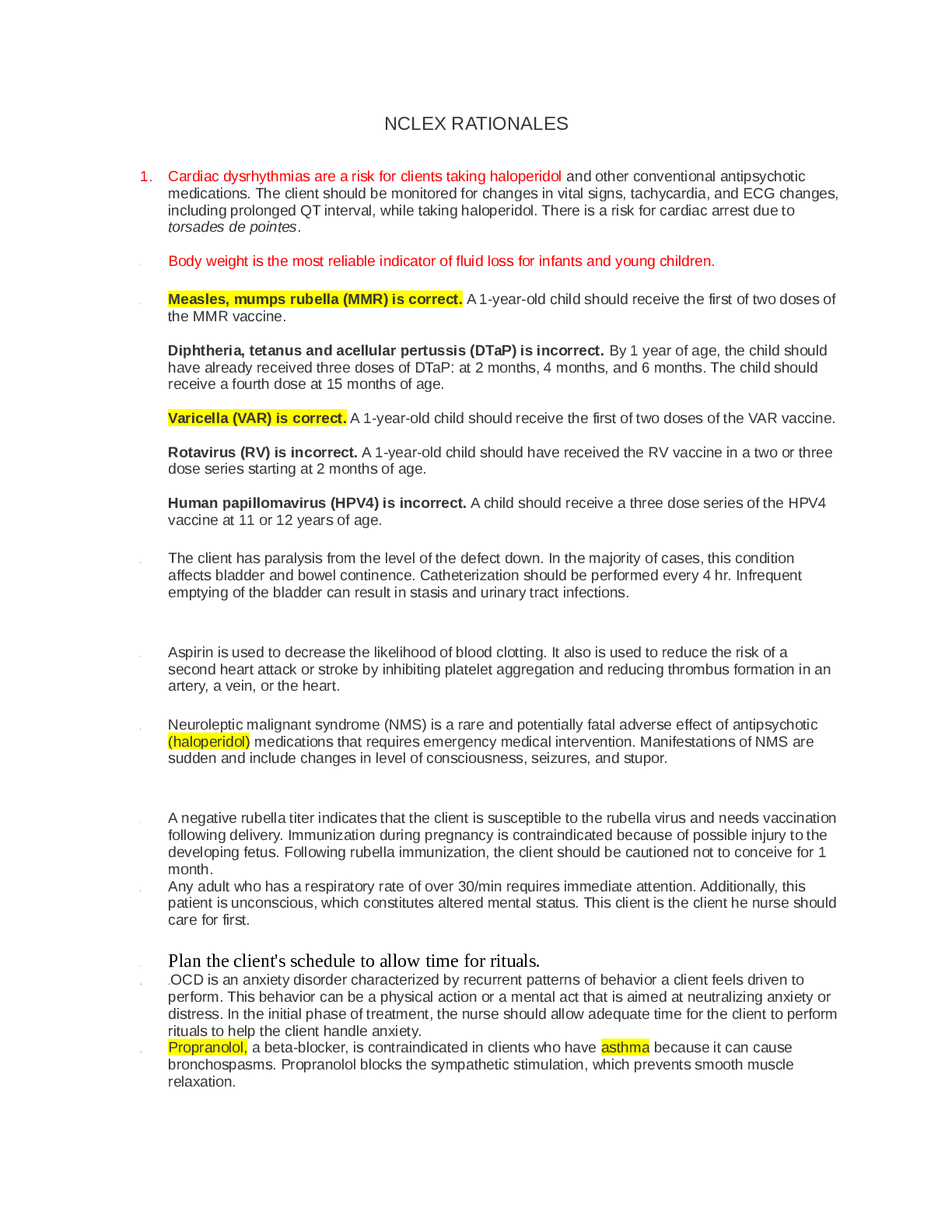

.png)


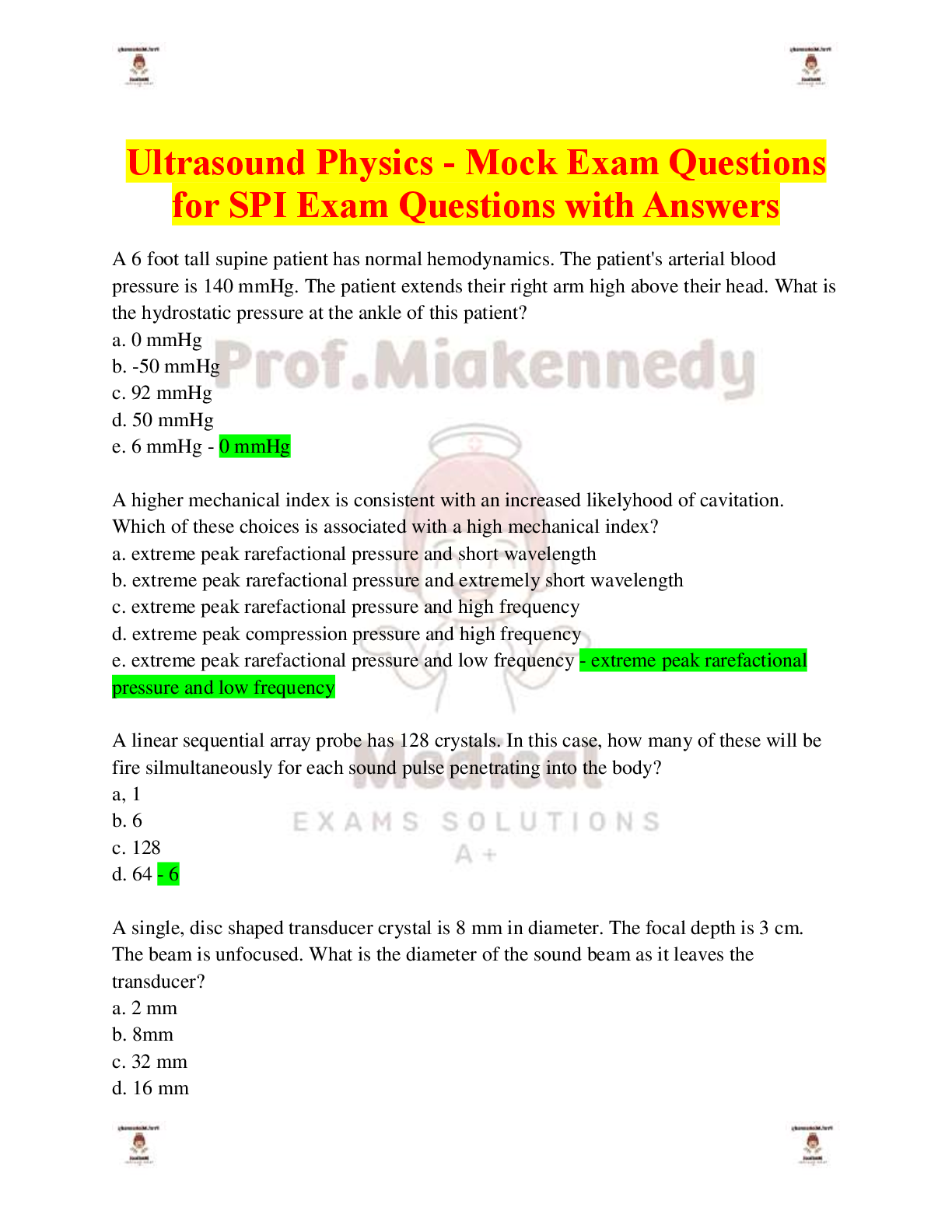

.png)
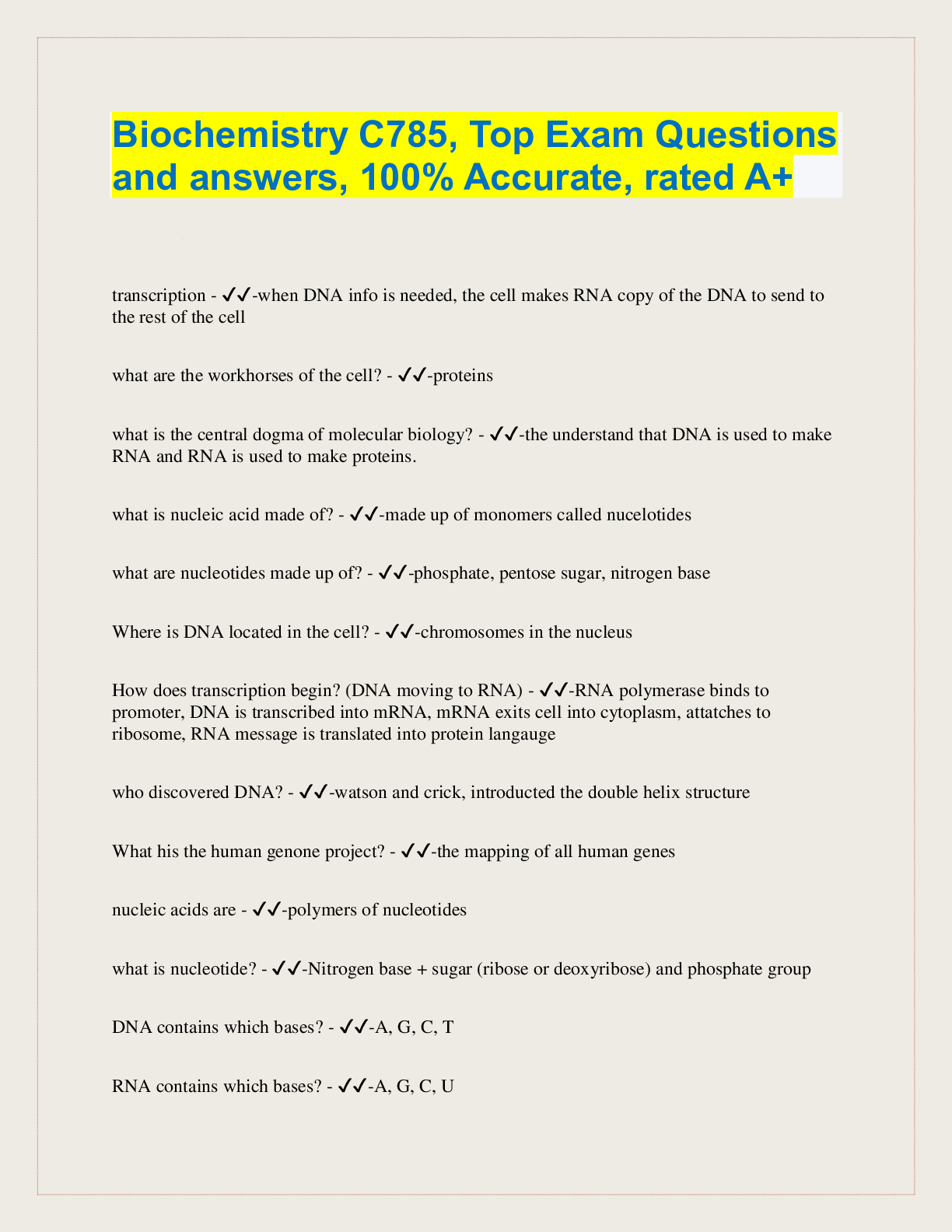





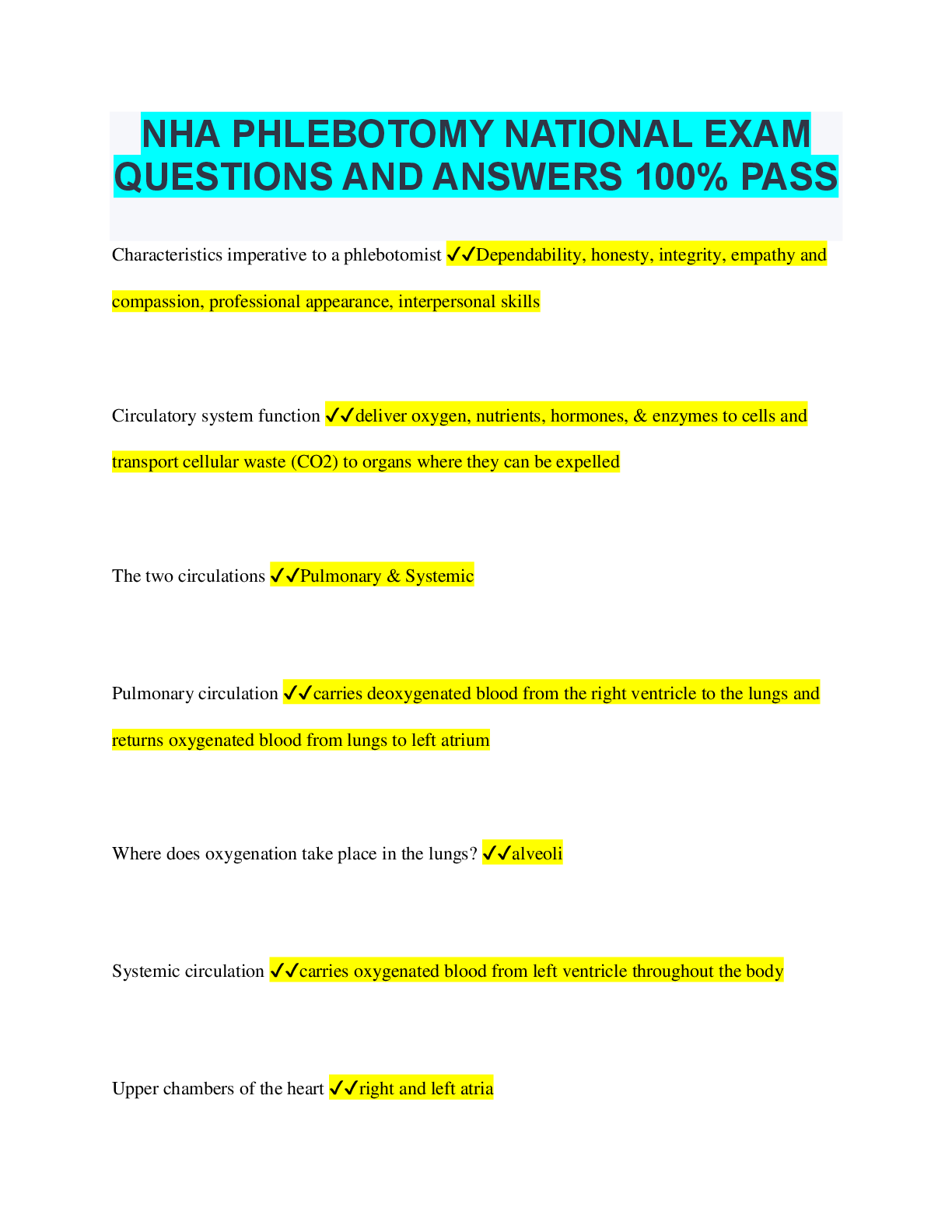




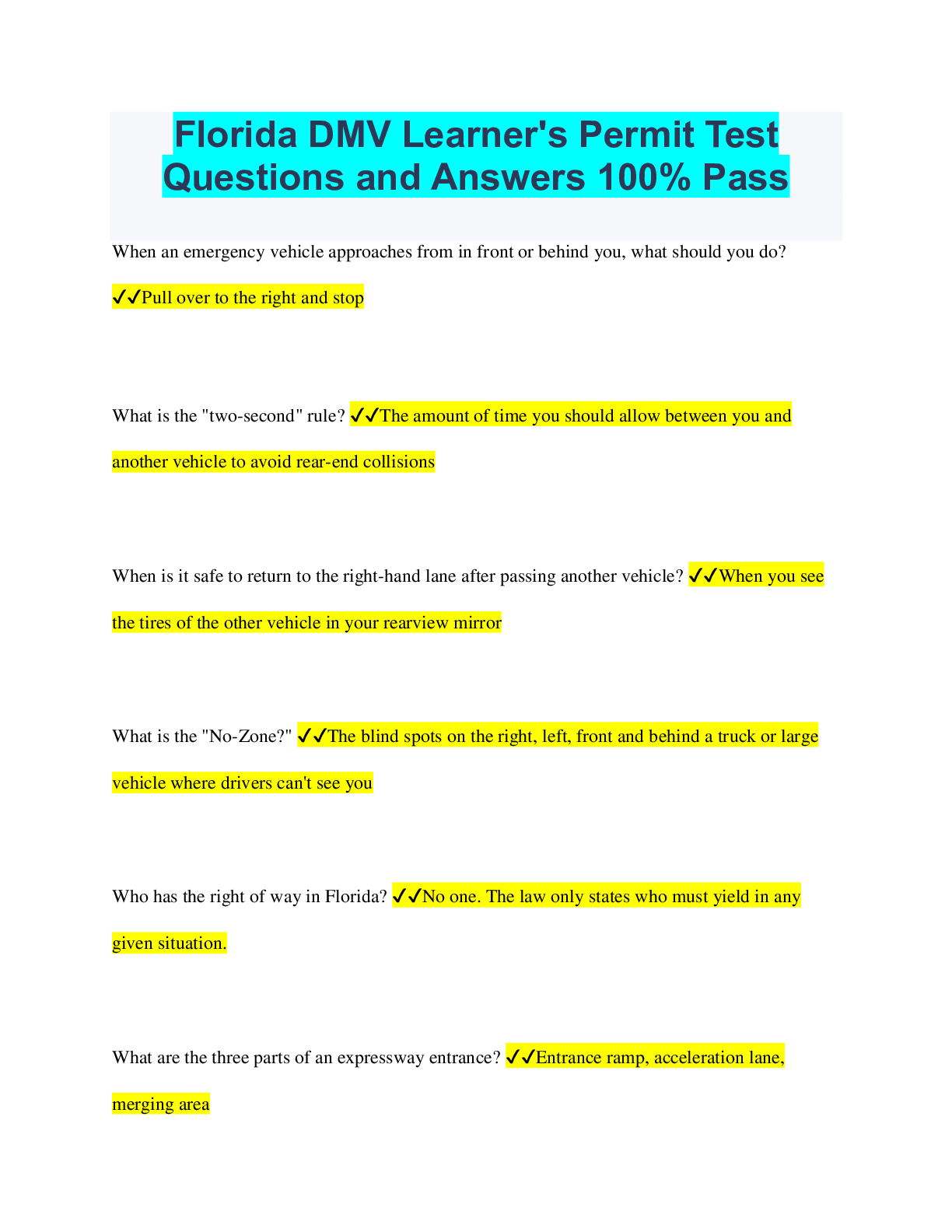
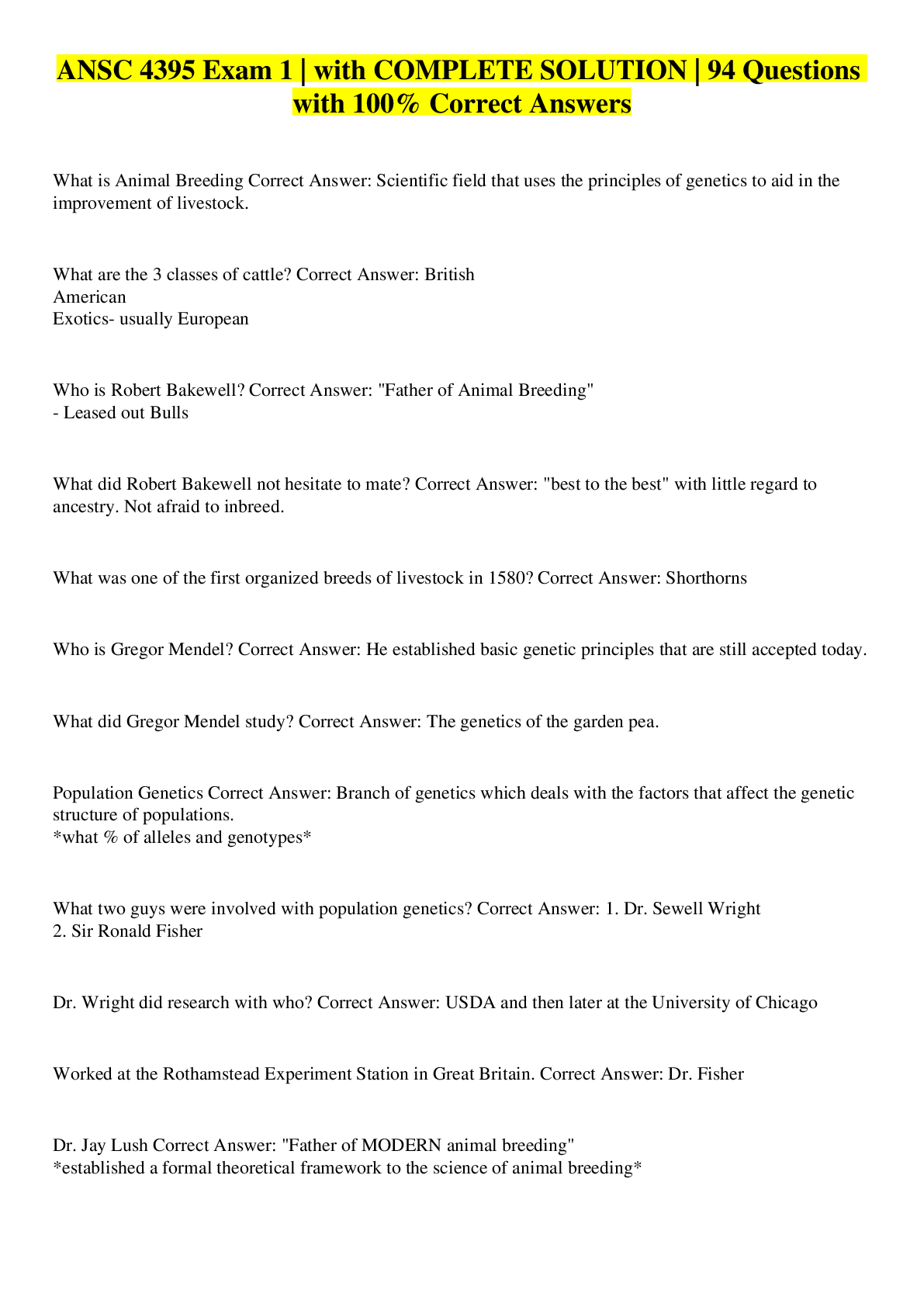

.png)


